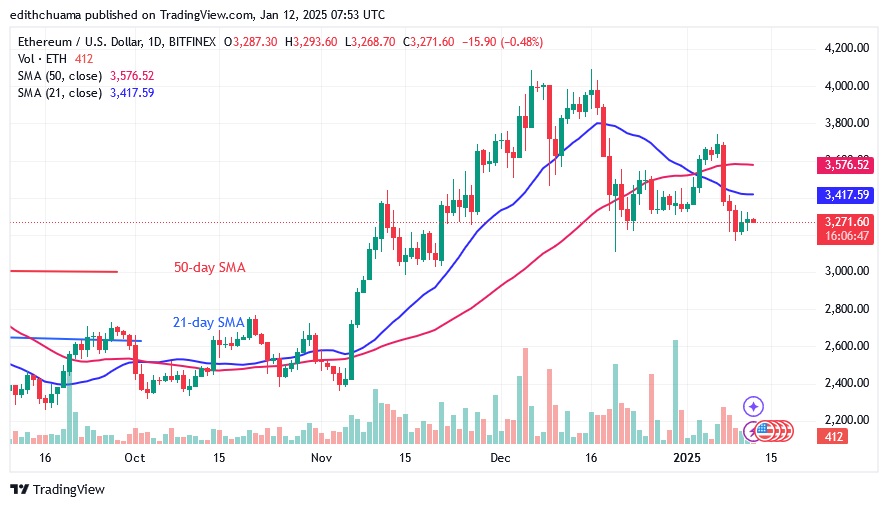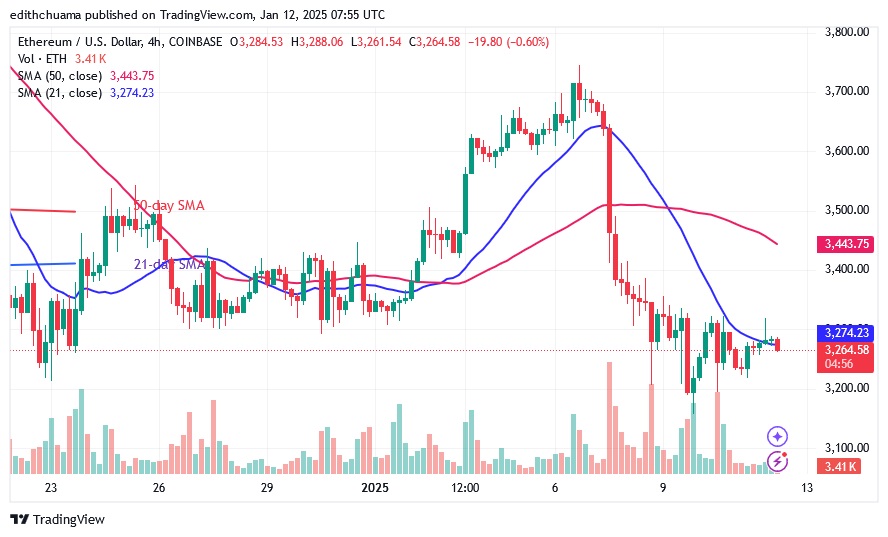The price of Ethereum (ETH) has fallen below the moving average lines, reaching a low of $3,165.50 on January 9, 2025. Selling pressure has eased above the $3,100 support, but the market has continued to consolidate above the current support but below the moving averages.
Long-term analysis of the Ethereum price: bearish
The largest altcoin is trading in a tight range below the moving average lines. On the upside, Ether will resume its uptrend once it breaks above the moving average lines. The altcoin will test its previous highs of $3,700 and $4,000.
On the other hand, if Ether falls off the moving average lines and breaks below the $3,100 support, the market would retrace to the previous low above the $3,000 support. Ether could fall to a low of $2,850 if it loses its $3,000 support. At the time of writing, the price of Ether stands at $3,263.
Ethereum indicator analysis
The price bars are below the moving average lines, which are trending downwards and signaling a decline. The 21-day SMA is a resistance line for the price bars and limits the upward movement of the cryptocurrency. Doji candlesticks appear on the 4-hour chart, consolidating above the $3,200 support.

Technical indicators:
Key resistance levels – $4,000 and $4,500
Key support levels – $3.500 and $3,000
What is the next direction for Ethereum?
The 4-hour chart shows that Ether is trading in a tight range between the $3,200 support and the moving average lines. If the bears break the current support at $3,200, the market will retest its previous lows at $3,100 and $3,000. Ether is currently bearish as it diverges from the moving averages.

Disclaimer. This analysis and forecast are the personal opinions of the author. They are not a recommendation to buy or sell cryptocurrency and should not be viewed as an endorsement by CoinIdol.com. Readers should do their research before investing in funds.







